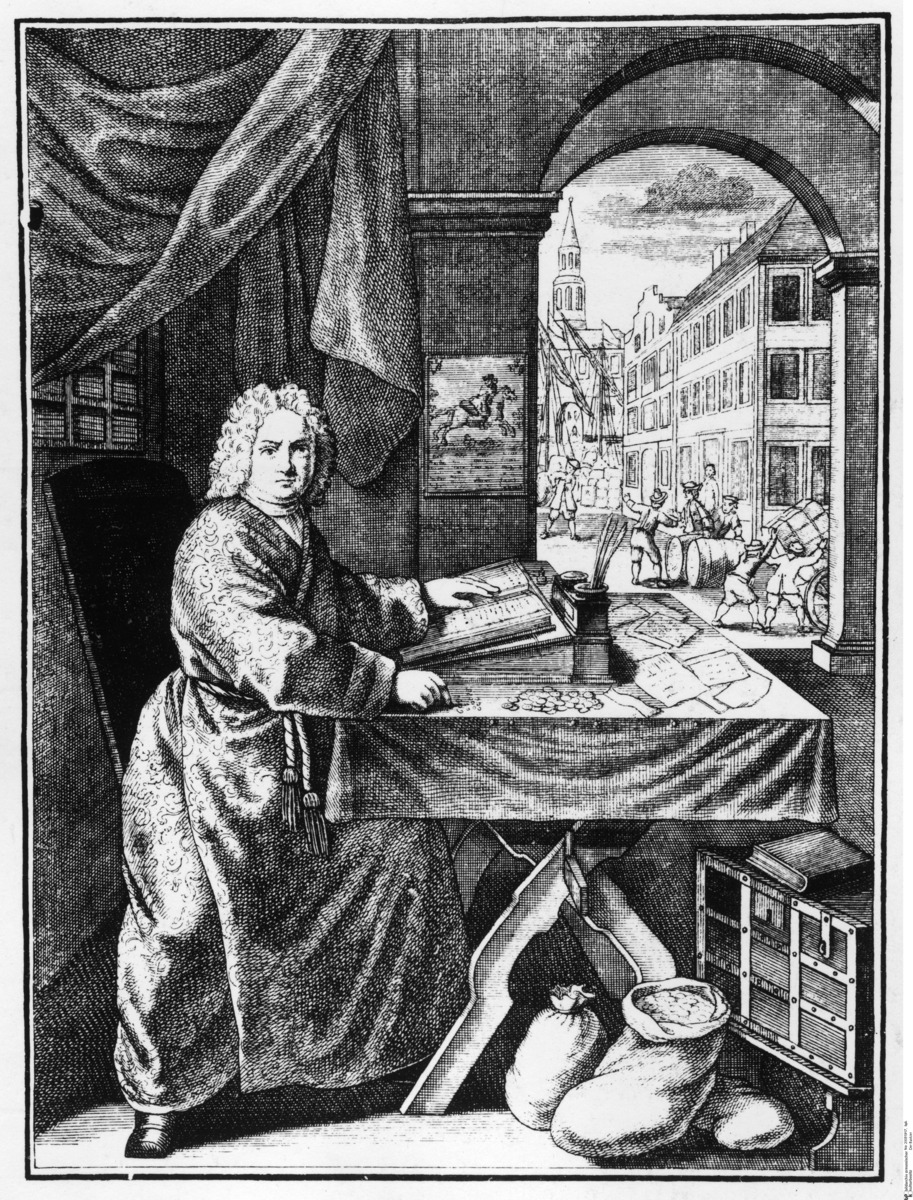Abstract
Banking underwent important structural development in early modern
Germany. In the process, successful moneylenders and moneychangers were
transformed into private bankers. Inflation and financial crisis,
accompanied by widespread coinage fraud at the outset of the Thirty
Years War – the so-called Kipper und
Wipperzeit (1619-23) – provided further incentive to establish
trustworthy banking facilities. Private banks were built upon the assets
and reputations of their owners, whereas public lending sources were
tied to government and municipal bonds and mortgages on landed property.
In the seventeenth and eighteenth centuries, private bankers were
reluctant to risk financing the costly activities of absolutist states,
which sometimes (in Prussia, notably) were self-funded ventures.
The banker depicted in this engraving confidently inventories his
cash deposits. The papers spread on the table are, presumably,
profit-bearing bills of exchange, a financial instrument used in Europe
since the Middle Ages. The view through the window shows the hustle and
bustle of commercial activity on the urban streets outside.
